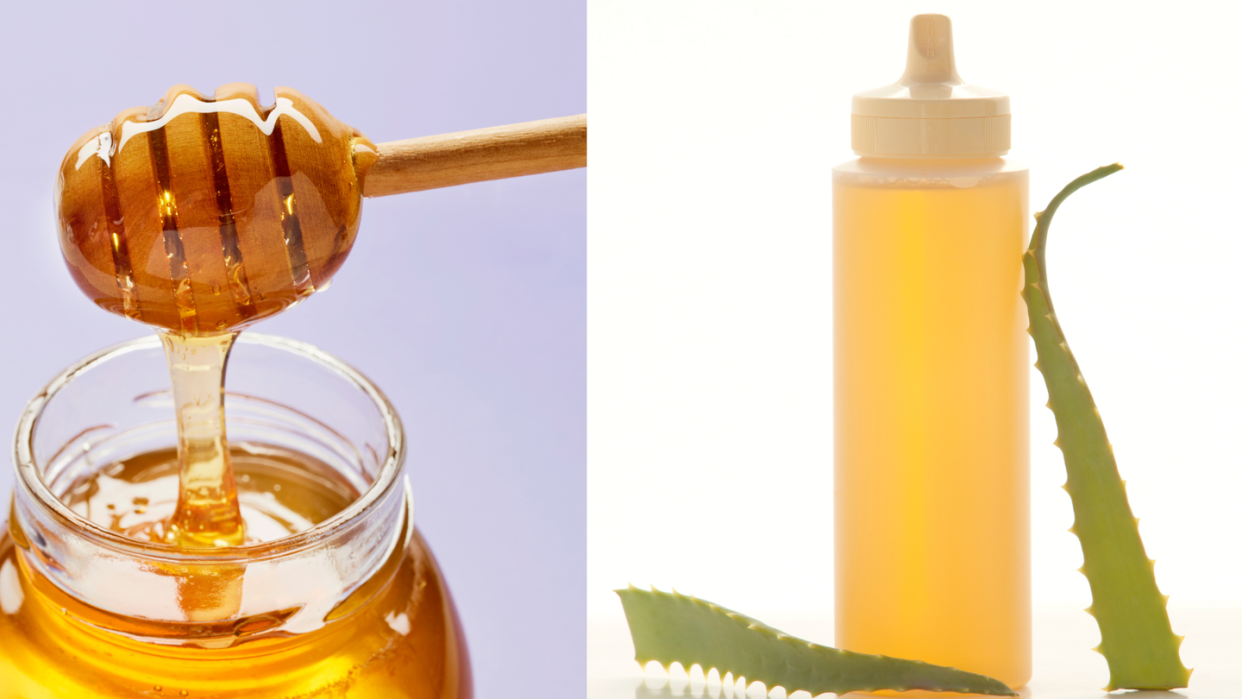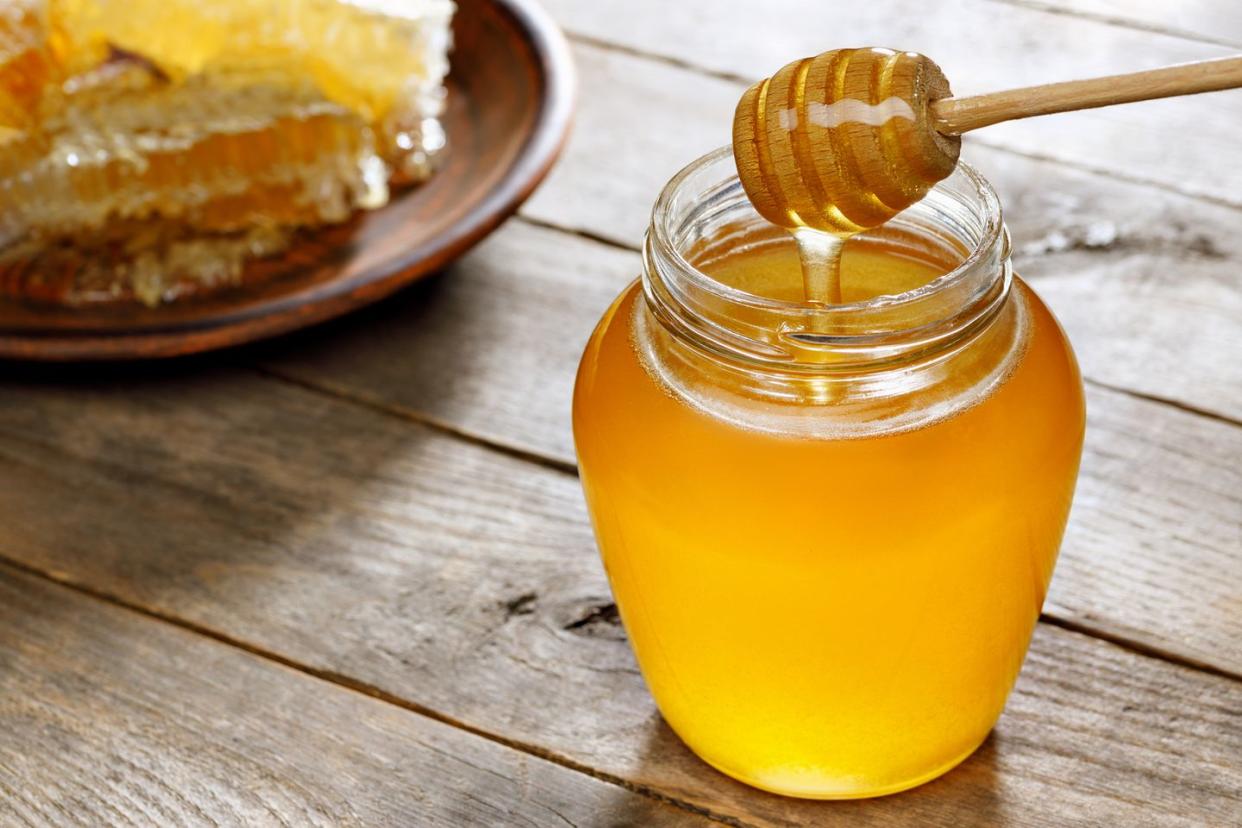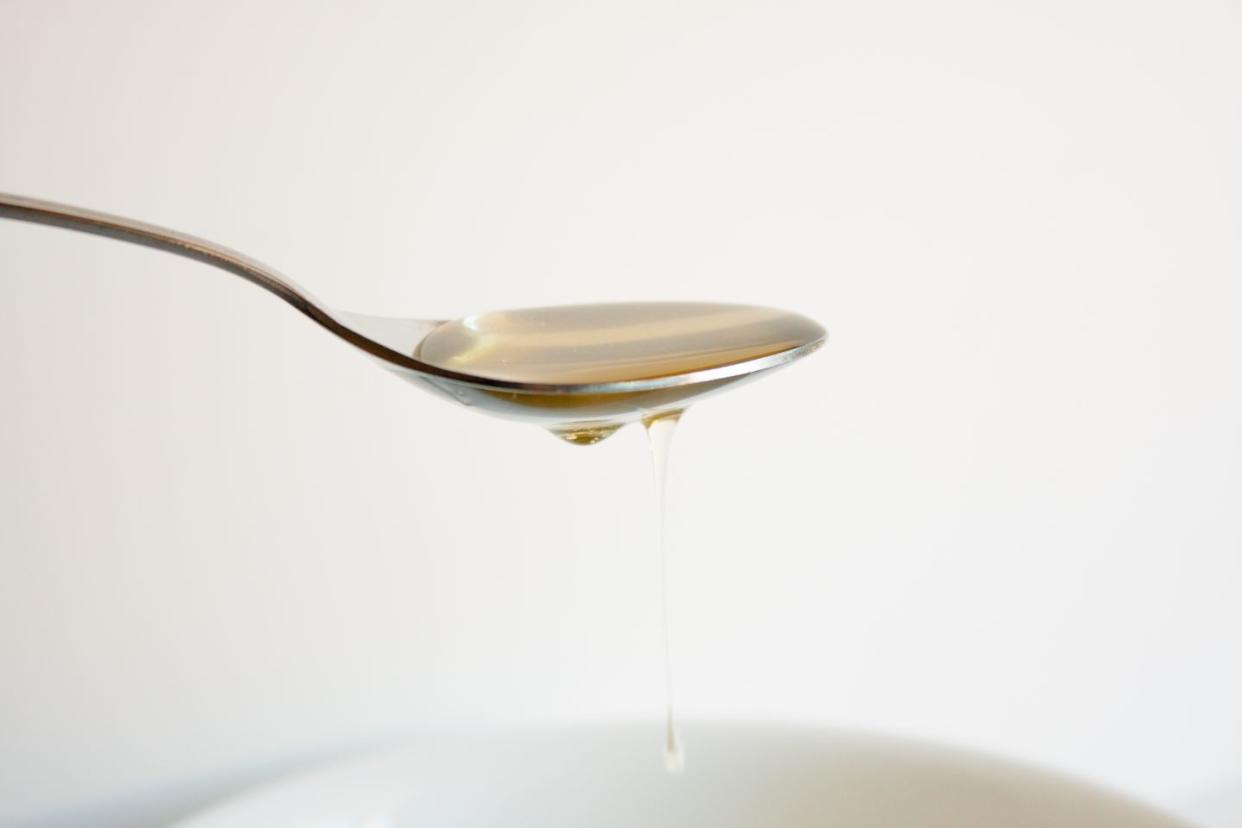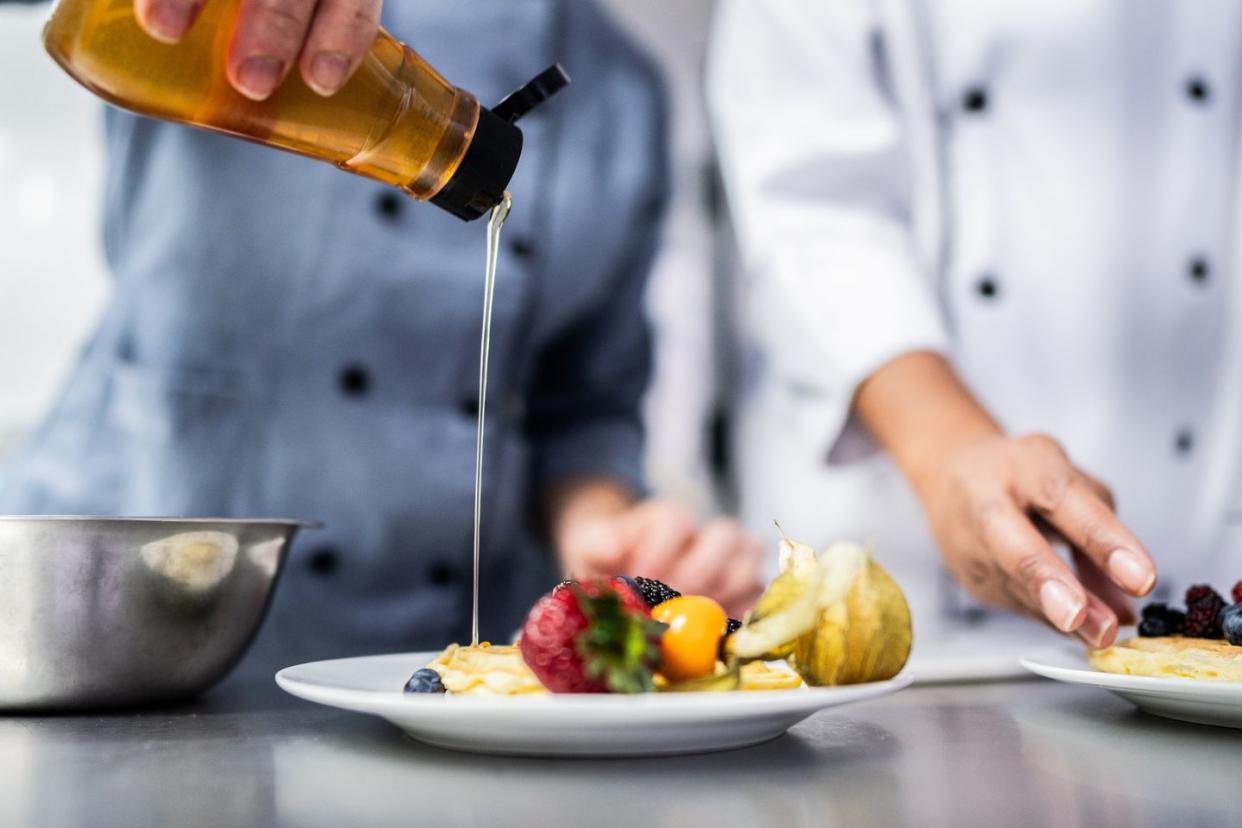This Trendy Sweetener Has 30% More Fructose Than High Fructose Corn Syrup

When we don’t have time to dissolve granulated sugar in our iced coffee, we can rely on liquid sweeteners to get the job done. And thankfully, there’s a wide variety of products in this category that impart their own unique flavors.
There’s molasses, corn syrup, sugar-free sweeteners, maple syrup, and more. But two of the most common liquid sweeteners that you might encounter are agave and honey. The two ingredients are both sweet, syrupy, and tend to look indistinguishable from each other.
But what’s actually the difference between them? Can they be used interchangeably? Does one have more health benefits than the other? We’re here to answer all those questions and more. Here’s what you need to know about honey and agave.
What Is Honey?

Honey is an ingredient that’s been used for millennia for both culinary and medicinal applications. At the most basic level, it’s a byproduct produced by bees with flower nectar. Honey bees transform the nectar into honey by removing the water and using their natural enzymes to alter the sugar structure.
Honey has an average moisture level of around 18 percent and veers on the acidic side on the pH scale, which makes it difficult for bacteria to grow on it. That’s why honey can stay good in your pantry for virtually forever.
Its antimicrobial properties are also the reason that honey has been used medicinally throughout history. Traditional Ayurvedic medical practices involve spreading honey over wounds and burns. Honey was used to embalm the dead in ancient Egypt. The Romans preserved fruit and meat by submerging them in honey.
But not all honey available today can be considered a superfood. The average supermarket brands, like the ones in adorable bear-shaped bottles, are certainly still effective sweeteners—but they don’t come with as many health benefits.
Many industrial honey brands source their ingredients from several different hives before cooking and filtering it to create a more consistent product. This honey is typically easier to pour, looks more clear, and has a more mild flavor. But the filtering process also removes many of the enzymes, vitamins, and antioxidants.
If you’re looking to maximize the health benefits of your honey, your best bet is opting for a local honey that’s raw and unfiltered. The product will be more cloudy in appearance, but it comes with all of the nutrients that you won’t find in processed honey. And as a bonus: it tastes better, too.
What Is Agave?

Agave syrup, also known as agave nectar, is a sweetener derived from agave plants. The agave category includes around 200 plant species native to the Americas, particularly modern-day Mexico.
The use of agave sap for culinary purposes has a nearly 10,000 year history. As indicated through archaeological research, one of the most common preparations of agave sap was fermentation. Pulque, a lightly alcoholic agave beverage, was considered by Aztecs to be sacred.
Once Spanish colonists introduced the process of distillation (among many more unsavory things) to the region, agave sap was used to create spirits we now recognize as tequila and mezcal.
But agave syrup is a relatively new ingredient. It was first introduced to American consumers at a trade show in 1995 and grew in popularity in the early aughts. Instead of being fermented into alcohol, the agave sap is heated and filtered into a liquid sweetener.
Unlike honey, agave is more neutral in flavor, has a thinner consistency, and is suitable for vegan diets. And because of the nature of the ingredient, agave syrup must be processed with heat and filtration before it hits shelves. So while there are trace levels of certain antioxidants in agave, there are far fewer health benefits than you’d find in honey.
It’s also important to note the difference in its sugar composition. Honey is primarily comprised of roughly 30 percent glucose and 40 percent fructose. Agave, on the other hand, contains an average of 84 percent fructose (for reference, the oft-maligned high fructose corn syrup contains 55 percent).
Can Honey And Agave Be Used Interchangeably?

The short answer is: sometimes, but not always. And it comes down to the level of sweetness.
Agave is also 150 percent sweeter than regular table sugar, while honey is only 25 percent sweeter. That means you can use much less agave syrup to achieve the same level of sweetness that you would with honey.
So when it comes to sweetening beverages and basic cooking, you can easily swap out honey for agave and vice versa—but you’ll need to adjust the amounts accordingly.
One area where you won’t be able to use the two ingredients interchangeably is baking.
Baking cookies, cakes, and muffins is a science that relies on specific ingredient ratios and hydration levels to achieve the right results.
If you were to swap honey for agave and use the same amount of the ingredient, your baked goods will end up cloyingly sweet. But if you swap honey for agave and use much less of it, you can seriously mess with the texture of your recipe.
You Might Also Like






